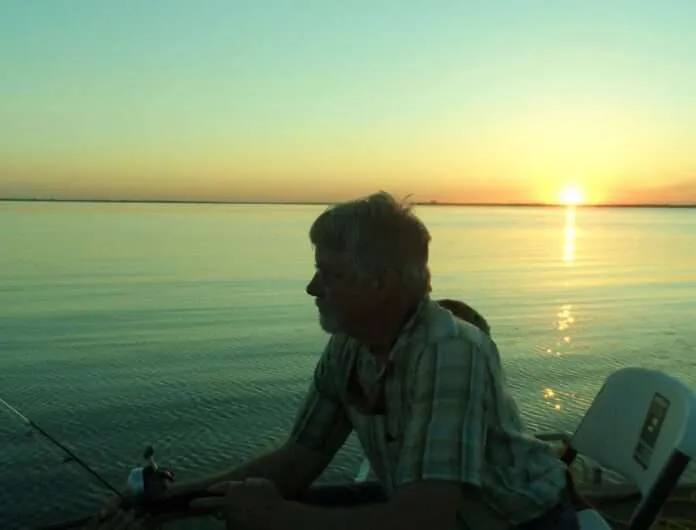Many a good fisherman has cut his or her “teeth” on bluegills, often catching them from a farm pond with nothing but a hook and a bit of worm under a bobber. Some of us can even remember catching them with a cane pole and an old cork fastened on some sort of heavy cord. They’re feisty fighters and provide just enough action to get and keep a youngster “hooked” on fishing. When spawning, they scoop out oval shaped beds in the pond bottom, and in defense of their spawning ground, the little rascals will chase about any bait or lure thrown into the water.
I recently stumbled across another role for bluegills besides helping kids learn to fish. Do you remember how coal miners of years ago carried caged canaries into the mine with them to detect toxic air? It seems the birds were able to detect toxins in the air well before the miners could, and by watching the birds’ reactions the miners would be warned in time to exit the mines before breathing the poisoned air. It seems that some time back the Army developed a system of using bluegill fish to detect toxins in drinking water, much like the canaries were able to do with air in the coal mines. The original process was named IAC 1090, or Intelligent Aquatic BioMonitoring System, and though it was developed by the Army for its own use, the system is currently used to monitor the drinking water at Fort Detrick, Maryland, plus several large cities including New York City, San Francisco and Washington DC, and since 911, even more large US cities have begun using bluegills to help protect their water supplies.
It seems bluegills are extremely sensitive to toxins in the water where they live, so the system works by employing bluegill fish at water treatment plants. Each fish is kept in an individual plastic case that is described as looking like a trunk made into an aquarium. Fish do a three week tour of duty and are then replaced. They are kept inside at the water treatment facility and water is piped through the case, where electronic sensors monitor each fish for what amounts to “fish coughs.” Much like we humans cough to expel something foreign from our respiratory system, bluegills do the same by flexing their gills to expel something foreign, say a grain of sand, from their breathing passage. The instruments pick up these “coughs” and other irregularities and send the information to computers that constantly compare it to the fish’s normal behavior. If the computers sense that enough of the fish are upset by something in the water, they automatically trigger water samples to be taken and notify workers.
Bluegills are best able to detect non-biological threats such as pesticides, mercury, cyanide, heavy metals, fuel spills and phosphates. By monitoring the fish, workers are not able to tell exactly what toxins they are reacting to, just that there is threat to the drinking water that needs immediate attention. One article I found said that the Army had tested bluegills against 27 different toxins, and the fish detected them all.
The system at Fort Detrick tests both the raw water coming into the plant and the fully treated water just before its leaves the treatment facility. One example of the bluegill’s effectiveness cited a situation when the computer monitoring the fish sensed that the bluegills sampling the raw water pumped from the river had become agitated. The incoming water was immediately shut off and samples taken, revealing that someone had evidently washed a pesticide truck upstream in the river. The incoming water was so poisoned that all the fish that initially sensed it died, but not before the threat had been
addressed and identified. In this case the city of Fredericksburg, Virginia also benefited from the bluegills, allowing it to shut off its incoming water also, which was being pumped from the same river just one hundred yards upstream.
A spokesman for the San Francisco Public Utilities Commission, had this to say about their system that uses the little fish to protect its drinking water. “We appreciate that there’s an irony to this, that the oldest technology in the world -life- is now being combined with high technology to keep the water supply of the region safe. We want to use what works, and if that means we have to become fish keepers, then we will.” So the next time you catch a mess of bluegills, look upon them with a whole new respect! Continue to Explore Kansas Outdoors.
Steve can be contacted by email at [email protected].





